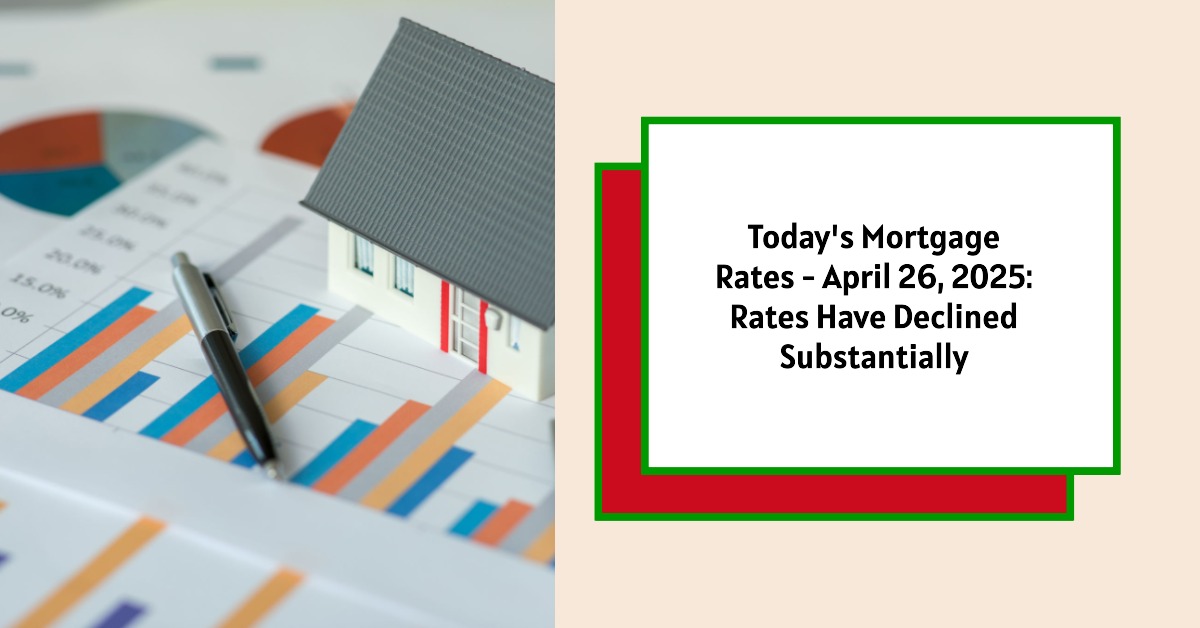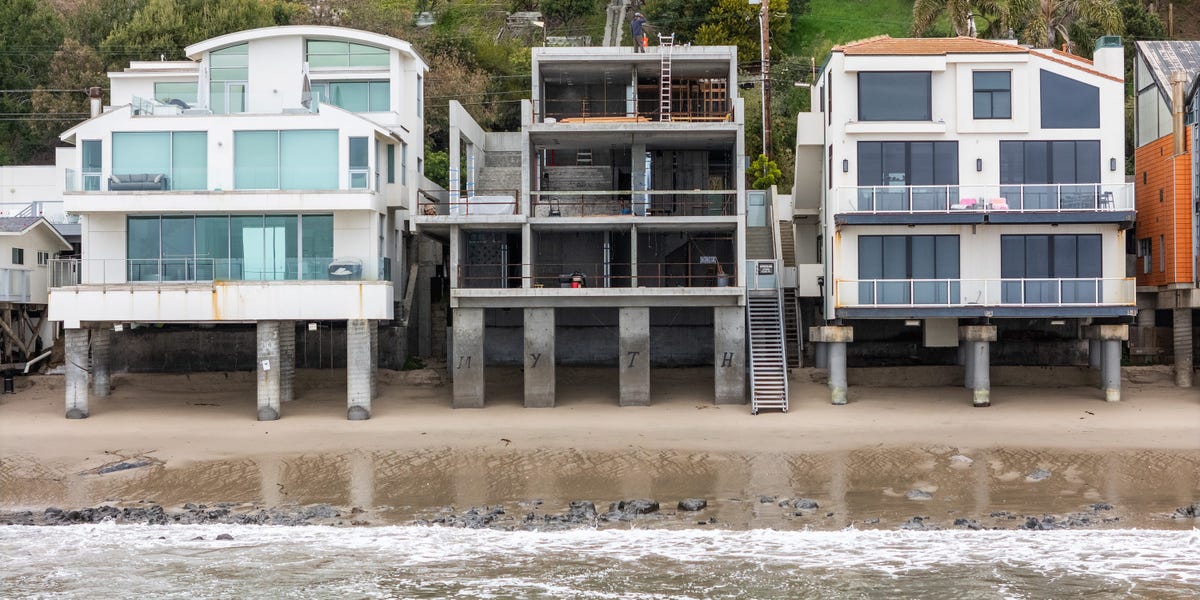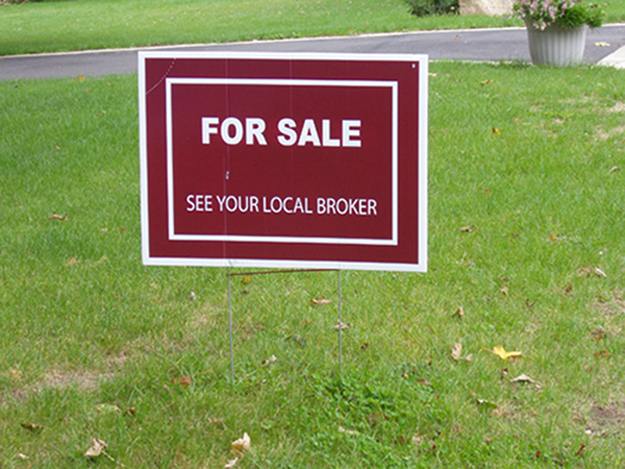A
s of April 26, 2025, mortgage rates have dropped again, with the 30-year fixed rate falling to 6.71%, marking a notable decrease that puts it under 6.75% for the first time in over a week. This comes after a period of volatility earlier this week when fears regarding President Trump potentially firing Federal Reserve Chair Jerome Powell caused rates to spike.
The 15-year fixed mortgage rate has also seen a decline, falling to 6.00%, its lowest in nearly three weeks. If you're considering buying a home or refinancing, now might be a crucial time to secure a loan.
Key Takeaways:
- 30-Year Fixed Rate: 6.71% (down 9 basis points)
- 15-Year Fixed Rate: 6.00% (lowest in almost three weeks)
Economic Impact: Ongoing concerns over inflation and tariffs may influence future rates.
Adjustable Rates: Still higher than fixed rates, with the 5/1 ARM at 7.30%.
Refinance Rates: The 30-year refinance rate is at 6.72%.
Current Mortgage Rates
Mortgage Type | Current Rate
----------------|-------------
30-Year Fixed | 6.71%
20-Year Fixed | 6.39%
15-Year Fixed | 6.00%
5/1 ARM | 7.30%
7/1 ARM | 7.31%
30-Year VA | 6.23%
15-Year VA | 5.73%
5/1 VA | 6.37%
Current Refinance Rates
Refinance Type | Current Rate
----------------|-------------
30-Year Fixed | 6.72%
20-Year Fixed | 6.34%
15-Year Fixed | 6.10%
5/1 ARM | 7.60%
7/1 ARM | 7.49%
30-Year VA | 6.32%
15-Year VA | 5.85%
5/1 VA | 6.31%
Mortgage rates are influenced by various economic factors, including inflation, government policies, and the overall economic climate. Recently, concerns surrounding President Trump's trade war have added to this volatility, affecting both mortgage and refinance rates.
The uncertainty leads to fluctuations in the market. It’s critical for potential homeowners to focus on aspects they can control—like improving their credit score and saving for a larger down payment—rather than trying to predict the ideal moment to lock in a rate.
A 30-year fixed mortgage is the traditional choice for many homebuyers, offering lower monthly payments and predictable payments over an extended time. However, this option comes with higher interest rates compared to shorter-term loans, resulting in paying significantly more interest over the life of the loan.
On the other hand, a 15-year fixed mortgage offers lower interest rates and allows you to pay off your home much more quickly. You save on interest but must be prepared for higher monthly payments.
Adjustable-rate mortgages (ARMs), such as the 5/1 ARM, feature a fixed rate for an initial period followed by adjustments, typically once per year. This option often starts with lower initial rates but can be unpredictable in the long term as rates adjust.
The recent drop in rates can be linked to the announcement from President Trump regarding his intent not to fire the Fed Chair, which likely reassured investors. However, it is crucial to keep monitoring the news and economic data as tariffs and inflation continue to threaten rate stability.
Economists believe that if inflation stays high, mortgage rates could rise again. Conversely, a downturn could lead to lower rates if the Federal Reserve reduces interest rates to stimulate the economy.
Many homebuyers ponder the ideal moment to buy a house based on mortgage rates; however, attempting to time the market is often futile. Rates can be heavily influenced by external economic conditions, including geopolitical events, trade agreements, and local economic indicators.
The importance of working with skilled loan officers or mortgage brokers cannot be overstated as they can provide insight and help navigate fluctuations.
The Federal Reserve plays a crucial role in determining mortgage rates through its monetary policy. When the Fed decides to alter interest rates, it directly impacts the overall cost of borrowing.
With refinancing options currently showing competitive rates, it's vital to assess whether moving to a new mortgage could be beneficial for you. Homeowners refinancing can aim for a lower interest rate, change the duration of their loan, or access equity for renovations or major purchases.
Before committing to a refinance, consider differences between your current mortgage rate and the potential new rate, how long you plan to stay in your home, and whether your financial goals still align with your current mortgage.
As we progress into 2025, many analysts foresee a potential decrease in mortgage rates, but this is contingent on numerous factors, including economic activity, inflation rates, and domestic policy changes. If the economy exhibits signs of slowing, the Fed might take steps to lower rates further to stimulate growth—a factor that could result in lower mortgage rates as well as further opportunities for refinancing.
However, there are also speculations about rising interest rates due to ongoing inflationary pressures, which could impact the cost of borrowing.
In the current mortgage climate, the slight decrease in rates presents an opportune moment for potential buyers and those considering refinancing. With the 30-year fixed rates hovering just below 6.75% and a favorable environment around 15-year options, it's essential to evaluate your needs and situation carefully.
For those looking to secure a mortgage or refinance, using a mortgage calculator can be incredibly helpful in getting an accurate estimate of your monthly payments. They allow you to customize your calculations to include costs like homeowners insurance and property taxes.















